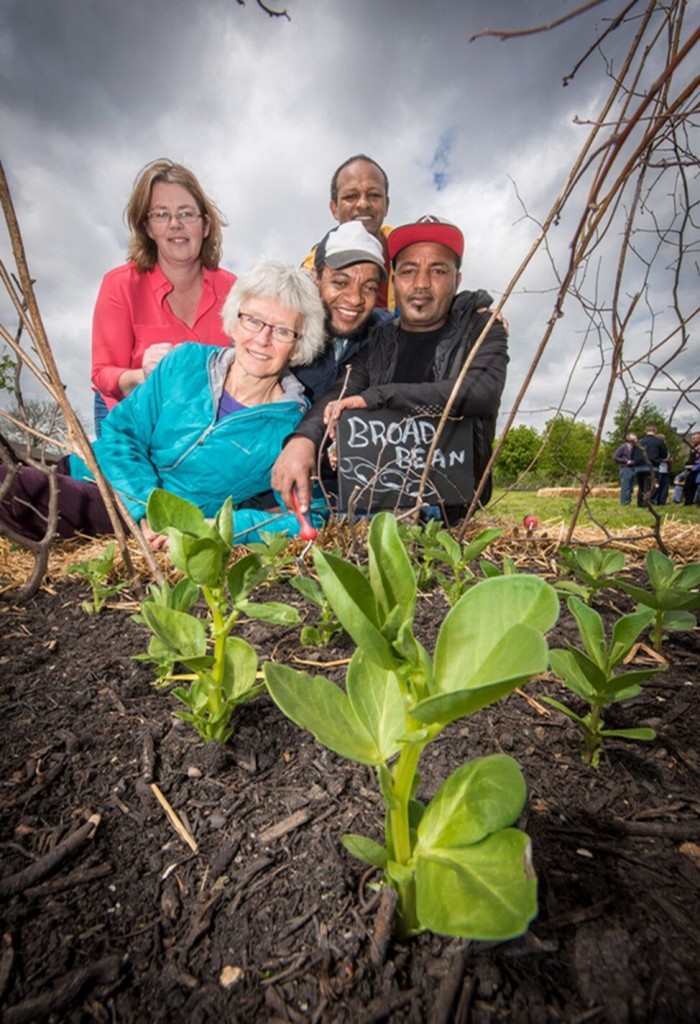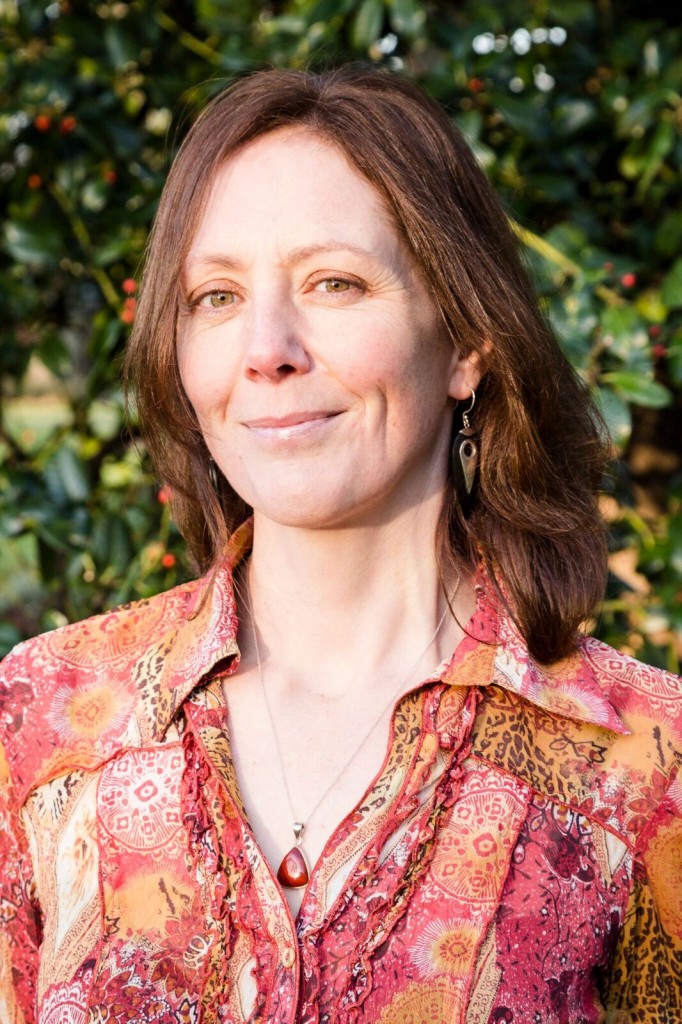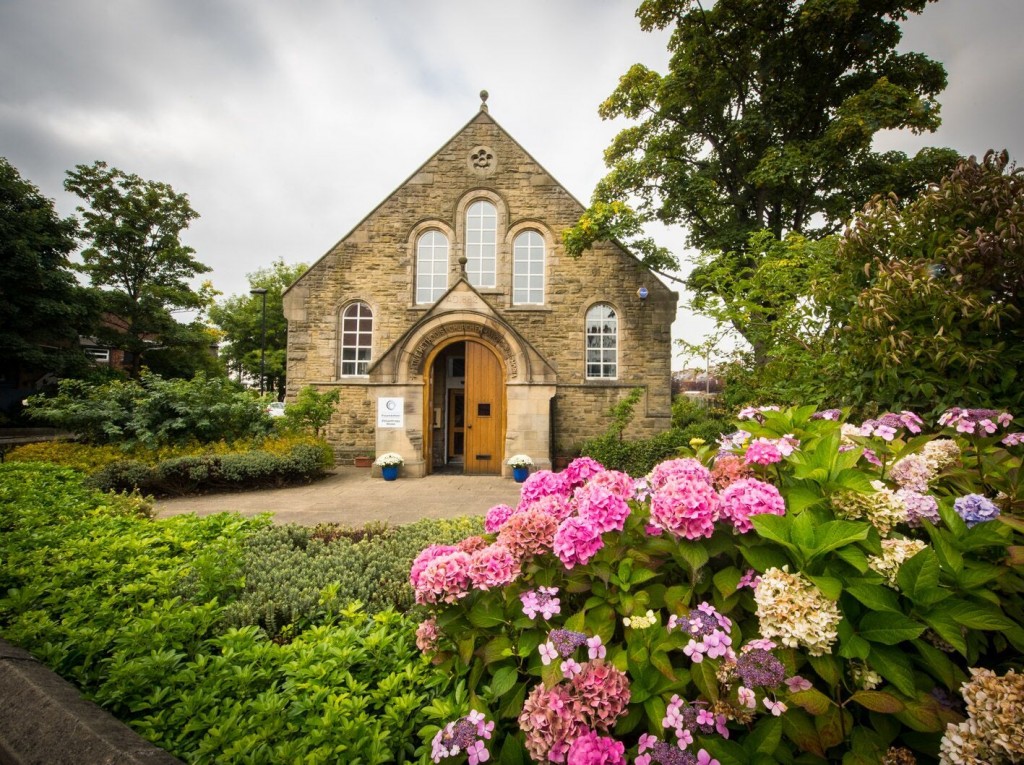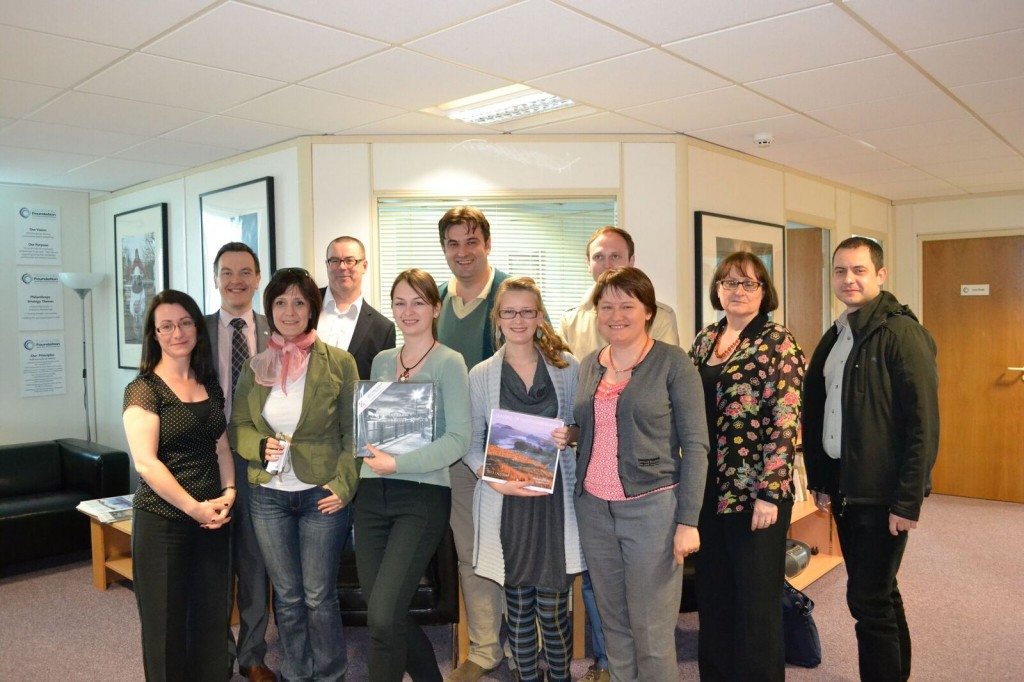Sandra King is the recently appointed Chief Philanthropy Officer at the Community Foundation Tyne & Wear and Northumberland, the UK’s largest community foundation. It’s an unusual job title but perhaps revealing of the growing maturity of the community foundation movement. Alliance editor Charles Keidan spoke to Sandra five weeks into post and she shared her thoughts on where she sees the movement going and what’s next at the Community Foundation.
What is your professional background and what are your hopes in your new role?
I started off in public health, though early on in my career, I actually worked in this community foundation, so I knew what community foundations do. For the last nine years, I’ve been running my own company, during which time we established Ways to Wellness, the first social impact bond to go live in the health field in the world.
The organization has changed a lot because it’s grown, got a new board, a different chief executive, and it feels that this community foundation has really come of age. When I walked into some of the older community foundations in America, they felt very established, they owned their own building, and now we own our building. It just feels really exciting to be back again.
When was the Community Foundation Tyne & Wear and Northumberland established and how big is it?
It was established in 1988, and since, we’ve grown an endowment of just over £73 million from local philanthropists – individuals, businesses, families. I think that’s interesting, because the North East isn’t the wealthiest part of England, and yet we have the most successful community foundation in Europe, and I think that’s about a passion from people – if they’ve done well in the North East they want to give back in the North East.
We’ve got over 250 different named funds that we manage, and those have been established by companies and by individuals. Some of them were charitable trusts that were set up a number of years ago and had effectively stopped awarding grants, so we’ve taken those over and made them live and awarding grants again. Last year we reached a big milestone since we started we’ve awarded £100 million in grants, which is a massive amount.
I think that’s about a passion from people – if they’ve done well in the North East they want to give back in the North East.
You’ve raised all the funds from Tyne & Wear and Northumberland, but do all the funds stay there?
We work with North East-based philanthropists and businesses but also work with national funders to help them spend money in the region too. We do a small proportion of grant-making slightly further afield, down to County Durham and Teesside, but the vast majority would be in Tyne & Wear and Northumberland.

The Comfrey Project is a local charity that works with refugees and asylum seekers on allotment sites across Newcastle and Gateshead.
Are those limits based on a decision that you’ve consciously made or is it just that your donors want to fund in that area?
I think it’s part of the community foundation model – you are the foundation of your community. We have an expert knowledge of what the needs are in our local communities and where work is going on.
We’re mostly quite a small grant-maker. We awarded £7.3 million in grants last year, but that was made up of almost 1,500 grants, so the average size of our grants would be about £5,000.
I think that’s a really interesting question, and one that a lot of community foundations are getting their heads around – what is community?
A lot of the groups we fund are community groups run entirely by volunteers, some of them might not even be established charities. So it’s getting the money out into those smaller groups who are meeting the needs of the area that we feel we specialize in.
As you say, that’s characteristic of community foundations, but I asked the question because I know that, in the US, over half the funding of some community foundations goes overseas.
I think that’s a really interesting question, and one that a lot of community foundations are getting their heads around – what is community? As people move away from their local area, community can be just as much about people interested in similar issues, as about geography. We need to be flexible enough to meet our donor’s philanthropic interests, but if somebody didn’t have a passion to see at least a majority of their grants awarded locally, it probably wouldn’t be for us.
But while people might want to do most of their giving locally, more and more, they will have interests that extend to different areas of the country, and we need to be able to manage that.
We need to be flexible enough to meet our donor’s philanthropic interests, but if somebody didn’t have a passion to see at least a majority of their grants awarded locally, it probably wouldn’t be for us.
You mentioned that you have your own building. It’s called ‘Philanthropy House’, I believe.
It was a very good decision by the board and the chief executive to make a statement that that is what we are about – encouraging philanthropy in the community, not just working with our donors. One of the key things on my to-do list is to establish us as a world-class centre for philanthropy, doing more work with philanthropists and their families, hand-holding them into philanthropy, and if they’re already involved in philanthropy, helping them to think about how to develop it.
What will that involve?
I’m still at the gathering of ideas stage, but there might be some fairly basic things to start with, like running seminars for new philanthropists such as ‘Welcome to Philanthropy’ introducing people to the terminology: what is a charity? What does it mean? Where does their income come from? What are these other words that we talk about in the charity world? Where does philanthropy play a part? One thing that is particularly relevant for us at our age, is next generation philanthropy.
One thing I’m keen to push forward is the concept of core competences in philanthropy for community foundation staff which might be accredited.
A few of our charitable funds were set up by regional entrepreneurs and we are getting to the point where they’re either still alive but wanting to hand onto their children, or they’ve passed away and have handed onto their children. How do you make that transition? How do you keep alive the wishes of the parents, but allow the children to do what they want to with philanthropy?
I’ve already spoken to one of our donor families, who’ve just gone through that process, and they said they’d be happy to share that. We would definitely want to widen that beyond our own geographic area, running sessions for neighbouring community foundations or others in the north.
Speaking of neighbouring community foundations, do you see yourself working with the community of community foundations? If so, how do you see that working, because it seems like your foundation is more developed in its structure than others?
Yes, we do. Our chief executive, Rob Williamson, is the vice-chair of UK Community Foundations. Last week, we had a peer-exchange visit with Cumbria Community Foundation and they brought 12 of their staff over, and we had workshops looking at different areas of sharing knowledge and expertise. I’m going down tomorrow to Quartet Community Foundation in Bristol, and then Leeds Community Foundation on Wednesday.
So some of it is about sharing what we’ve learned, some of it is about sharing what they’re doing. One thing I’m keen to push forward is the concept of core competences in philanthropy for community foundation staff which might be accredited.
Do you also have international links?
We’ve hosted some visits from Romanian community foundations, and they’re quite interested in our Vital Signs work, which we brought over to the UK from Canada.
One of our staff went out to Romania and ran some training for them and I’m sure our chief executive will be involved in international discussions. For me, we in Tyne & Wear and Northumberland will more successful, the more successful the whole field is, so while the majority of my focus has to be on working here, it’s actually in our interests to grow and strengthen the movement however we can. That is something the Foundation has done since it started and will continue to do.
While we can’t fill that hole by ourselves, there are things that we can do to try and leverage more money into the region from existing charitable trusts. That fits into why this post was started.
Do community foundations see themselves as one component of the wider field of charitable foundations?
We do. We are members of ACF (Association of Charitable Foundations). Also, one of the interesting pieces of work that we’re doing is partnering with some of the London-based larger charities, like Esmée Fairbairn, Henry Smith, Garfield Weston who would struggle to make small grants in the North East.
We see that as a really important role for the community foundation, especially since Northern Rock Foundation has shut down, which used to award about £17 million a year of grants in the North East.
While we can’t fill that hole by ourselves, there are things that we can do to try and leverage more money into the region from existing charitable trusts. That fits into why this post was started. We’re now the largest funder in the North East, and we feel we need to think not just about what we’re doing ourselves, but what else is going on, and how we can get more money into the voluntary sector.
One of the key questions in the foundation sector generally is about accountability. Community foundations allow gifts to be either recognized publicly or handled anonymously. What’s your take on that from the perspective of transparency?
If people want to give anonymously and that means there’s more money going into the local voluntary sector, then I would definitely be up for it. But they would need to be wanting to give in Tyne & Wear and Northumberland, which is what we’re all about.
We certainly do look at our donors and we always know where the money’s coming from. There may be some circumstances where we thought for ethical reasons, we can’t accept this gift. It may be that situation has arisen but I don’t know about it
Off the top of my head, while I get where you’re coming about transparency, I would hand on heart not want to discourage the people who give anonymously to our foundation because they are absolutely in it for the right reasons and I don’t think we can afford to lose the money into the charity sector at the minute. Things are tight. In terms of accountability from the grantee’s perspective, we are their funder so they are accountable to us.
There is sometimes a perception of community foundations as paternalist assemblies of the great and good. Do you think that’s something you need to address, or is it clear that you are non-paternalist organization?
In the early days, it was more the great and the good, but one of the things that excited me about this post is that we’re about to get a new chair, and she’s a female entrepreneur, so not from the great and the good at all. She’s made money and given back and is relatively young – she’s under 50, I think – and someone like that taking the chair role opens opportunities for us to engage with different people in different ways.
The board are very ambitious and passionate, and one of the reasons that they’ve created this post and had a restructure, is because they’ve effectively said, ‘we may be the most successful community foundation in Europe, but that’s not good enough, we need to be better’. So a lot of my work is how to take things from one level to the next.
Our structure is about 25 per cent voluntary sector leaders, 25 per cent public sector leaders, 25 per cent individually wealthy donors and 25 per cent leaders from the corporate sector.
Do you think we’ll see more diversity in all levels of the organization?
I hope so. We’re talking about giving individual board members key performance indicators, which we’ve not done before and one of the main things for me in the next year is to get this passionate and ambitious group of board members working even harder, but finding a way to do that that they’re comfortable with.
Our main philanthropy audience, if you like, is people who would give us £1m, but we also need to find better ways to engage the smaller and medium-sized enterprises that will bring different people in and through the system as they grow with us and again, it gets us further away from the great and good.
Will you have people from the communities that you have invested in at board level, or other levels?
We already have a really good balance on the board from all the different sectors. Our structure is about 25 per cent voluntary sector leaders, 25 per cent public sector leaders, 25 per cent individually wealthy donors and 25 per cent leaders from the corporate sector.
Another of the big debates in the philanthropic world is about investment – aligning them with mission, avoiding investment in fossil fuels, etc. What is your approach to the investment question?
Five weeks into post I have not yet read our investment policy in detail, but I do know that it’s something that we were looking at 10 years ago when I last worked here. I know that we do have an option for donors to invest in an ethical investment pot when they set up a fund with us. I also know that we have not disinvested in fossil fuels from our main pot.
What is your view on it?
I think this is a really hard one. My personal view is that I would disinvest in fossil fuels but I think it is very difficult when you have such a broad amount of stakeholders, and bearing in mind, a lot of the wealth in the North East came from fossil fuels. I think it’s something that all charities – us included – should be looking at.
It’s really about how we can unlock more philanthropy money to benefit our local communities.
Any final thoughts?
Something that has struck me since coming back into the movement – I don’t think we used the term ‘philanthropy’ ten years ago. We talked about donors and giving and grants, and I think in the movement as a whole, there’s a huge professionalism about philanthropy advice. We’re not just holding money for you to make grants from.
We have become experts in giving philanthropy advice: explaining to people the different ways that their money can make impact, assessing that impact, and we are developing that further in trying to work towards accredited qualifications for our staff.
That understanding of our role, what we can do to help donors think about how they give and why they give and what philanthropy means to them, and what the knock-on effect for the local communities is, is the big change I’ve noticed.
It’s reflected in our ambition to become a recognized centre for philanthropy and to work more widely to try and influence and encourage philanthropists, even if they don’t want to work with us. It’s really about how we can unlock more philanthropy money to benefit our local communities.










Comments (0)